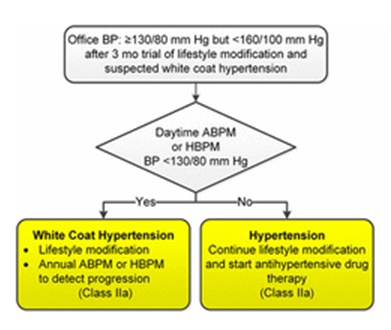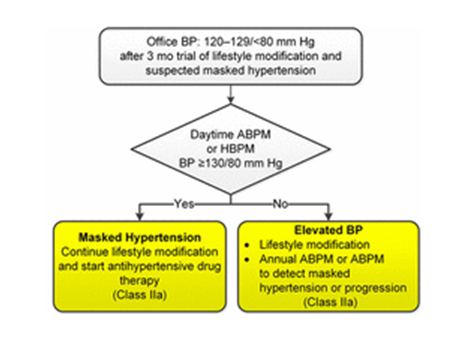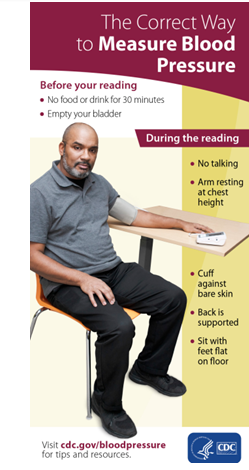BP check-up at home v/s doctor's clinic : Variation as per the time of the day
M3 India Newsdesk Jul 14, 2022
The blood pressure fluctuates throughout the day. In this article, the author elucidates upon how home BP measurement is better than at clinics along with the latest recommendations by AHA.
The management of blood pressure
The management and study of hypertension rely on blood pressure (BP) information received in a medical setting (clinic blood pressure (CBP)), resulting in the gathering of a vast amount of information regarding CBP. CBP remains the gold standard for hypertension diagnosis and management.
Throughout the day, blood pressure fluctuates, and a single or two measures taken at a doctor's office may not correctly represent the average value. Only the average blood pressure measurement allows a physician to correctly diagnose and treat a patient. Providing patients with the option to monitor their blood pressure at home may result in more accurate assessments.
One-quarter of individuals with hypertension are ignorant of their disease and do not get therapy to manage it. Without treatment, the illness may lead to heart attacks, strokes, renal damage, and other life-threatening complications.
Current recommendations indicate that patients with high blood pressure in the clinic be retested to validate the initial findings. While the recommendations urge home monitoring before the second measurement, data indicate that physicians continue to test blood pressure in their clinics.
The diagnosis and treatment of hypertension, a prevalent cardiovascular risk factor in the general population, have relied heavily on clinic-based blood pressure (BP) measurements. BP may vary significantly when measured at the clinic vs home. Self-measured blood pressure monitoring, the measurement of blood pressure outside the office by a person at home, is a proven method for out-of-office BP measurement. Multiple national and international hypertension guidelines promote self-monitoring of blood pressure (BP). Indications include the detection of the white-coat effect and masked hypertension.
Masked hypertension
Masked hypertension is characterised by normal blood pressure (BP) at the clinic or office (140/90 mmHg), but high BP outside the clinic (ambulatory daytime BP or home BP>135/85 mmHg). It may affect up to 10 per cent of the general population and is significant since it is not detected by normal medical tests but has a poor prognosis in terms of increased organ damage and cardiovascular events.
White coat hypertension
White coat hypertension occurs when your doctor's office blood pressure measurements are greater than in other locations, such as your home. Patients with white-coat hypertension or disguised hypertension may need specialised monitoring and testing to achieve an accurate diagnosis. Patients with these diseases may be misdiagnosed if just office-based testing is performed.
Other indications include confirming the diagnosis of resistant hypertension and detecting morning hypertension.


An algorithm to screen for white coat hypertension and masked hypertension among adults not taking antihypertensive medication is recommended in the 2017 Hypertension Clinical Practice Guidelines. ABPM indicates ambulatory blood pressure monitoring; BP, blood pressure; and HBPM, home blood pressure monitoring (ie, self-measured blood pressure monitoring).
Latest evidence
Research published in the Journal of General Internal Medicine indicated that home blood pressure readings were more accurate than those performed in clinics or at pharmacy kiosks.
The importance of monitoring at home
While past studies have shown comparable advantages for monitoring blood pressure at home, Green believes the most recent study may provide the strongest evidence yet due to the huge number of participants, the inclusion of primary care clinics, and the use of real-world health care practitioners to take readings as opposed to researchers. The research reveals that providing patients with access to accurate blood pressure readings so they may test their blood pressure at home would provide a more accurate depiction of the real burden of hypertension.
What influences a blood pressure measurement?
A blood pressure reading may be influenced by a number of factors, including:
- The anxiety of having your blood pressure measured. The term for this is "white coat syndrome." One-third or more of individuals with high blood pressure readings in the doctor's office may have normal blood pressure readings elsewhere.
- What you ate, drank, and did before the reading. Within 30 minutes of having your blood pressure taken, if you smoked, drank alcohol or caffeine, or exercised, your measurement may be higher.
- Your sitting position. Crossing your legs and letting your arm hang at your side instead of resting it at chest height on a table might increase your blood pressure.
It is essential to have an accurate blood pressure measurement in order to gain a better understanding of your risk for heart disease and stroke. A falsely low blood pressure number might offer you a false feeling of security about your health. A measurement that indicates your blood pressure is greater than it really is may result in unnecessary therapy.
What is the proper method for measuring blood pressure?
Find out how to have your blood pressure taken the right way, whether you're at the doctor's office or at home. Utilise this list:
- Do not consume anything thirty minutes before taking your blood pressure.
- Before reading, empty your bladder.
- Prior to reading, sit in a comfortable chair with your back supported for at least five minutes.
- Place both feet level on the ground and do not cross your legs.
- Place the cuff of your arm on a table at chest level.
- Ensure that the blood pressure cuff is snug, but not too so. The cuff should be worn directly on the skin, not over clothes.
- Do not speak while having your blood pressure tested.

AHA recommendations
The American Heart Association encourages home monitoring for all individuals with high blood pressure to assisting their healthcare practitioner in determining the efficacy of therapy. Home monitoring (self-measured blood pressure) is not a replacement for routine doctor appointments. If you have been given medicine to decrease your blood pressure, do not discontinue taking it without visiting your doctor, even if your home blood pressure monitoring results are normal.
How to choose a home blood pressure device
The American Heart Association suggests an automated bicep (upper-arm) monitor with a cuff design.
- Wrist and finger monitors are not advised since their readings are less accurate.
- Select a monitor that has been verified. If you are uncertain, see your physician or pharmacist for guidance, or visit validatebp.org for choices.
- When choosing a blood pressure monitor for an elderly patient, a pregnant woman, or a kid, ensure that it has been validated for these situations.
- Ensure the cuff fits – measure the circumference of your upper arm and choose a monitor with the appropriate size cuff.
Advantages of monitoring blood pressure at home?
Over the last 30 years, data on ambulatory blood pressure (ABP) or self-measured blood pressure at home (home BP (HBP)) have accumulated. The most significant difference between ABP and HBP is that ABP monitoring (ABPM) provides BP information at multiple points on a given day during unrestricted routine daily activities, whereas HBP provides extensive BP information obtained under fixed conditions and at nearly fixed hours of the day over an extended time period. The mean values of HBP are steady, and the short- and long-term repeatability are also excellent.
Home monitoring of blood pressure may:
- Facilitate early diagnosis.
- Track your treatment progress
- Encourage improved control.
- Reduce your health care expenses.
- Determine if your blood pressure changes outside of the doctor's office.
- HBP's overall advantage over ABP and clinic BP is due to its excellent repeatability (CBP).
- The superior utility of HBPM over ABPM is widely acknowledged.
- HBPM enables ongoing disease monitoring by patients and can offer healthcare providers timely clinical data and direct and immediate feedback regarding the diagnosis and treatment of hypertension.
- HBP is better able than CBP to predict hypertensive target organ damage and a prognosis of cardiovascular disease.
- Unlike CBPM, HBPM provides BP information in relation to time, that is, BP in the morning, evening, and during sleep.
- HBPM is a crucial tool for diagnosing white-coat hypertension and masked hypertension.
- The day-to-day variation of HBP has clinical value. Minimal alerting effects and placebo effects are produced by HBPM. HBPM can differentiate minor but substantial serial changes in BP and is the most practicable method for monitoring BP in the day-to-day treatment of hypertension. HBPM also promotes medication adherence. The HBP operating threshold has been determined.
- It is believed that HBPM will have a significant impact on the medical economy. The advantage of HBPM over ABPM and CBPM is evident from almost all viewpoints of applied and clinical research. These properties of HBPM imply that it is a suitable approach for diagnosing and treating hypertension in clinical practice.
Not everyone can monitor blood pressure at home correctly. If your pulse is irregular, home blood pressure monitors may not provide an accurate reading.
Click here to see references
Disclaimer- The views and opinions expressed in this article are those of the author's and do not necessarily reflect the official policy or position of M3 India.
The author is a practising super specialist from New Delhi.
-
Exclusive Write-ups & Webinars by KOLs
-
Daily Quiz by specialty
-
Paid Market Research Surveys
-
Case discussions, News & Journals' summaries